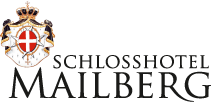Over the border
Znojmo
Znojmo is the oldest and biggest city of the former ‘German South Moravia’. The city, which is situated on a plateau high above the river Thaya in the centre of South Moravia, was often the battlefield.
As old castle and emperor city Znojmo has a well-preserved medieval city centre. Narrow, angular streets, quiet corners and romantic spots shape the city. The rotunda St. Katharina in the site of the castle, the tower of the guildhall, which is 80 m high, originates from 1445 and is situated at theMasarykplatz place, and the Gothic Cathedral of Saint Nicholas form the city’s characteristic silhouette.
The rambling underground corridors below the historical city centre of Znojmo belong to the vastest underground labyrinths of Central Europe. The beginning of their origin dates back to the 14thcentury. The corridors run on four different levels and altogether have a length of about 30 km. With its carefully planned ventilation shafts, flues and wells the underground system is a popular attraction.
As smallest winegrowing area of Moravia Znojmo offers characteristic wines from historical vineyards. First records of the city’s viticulture originate from the 12th century, findings even from the time of Marc Aurel. There are less winegrowers at work in Znojmo than in other winegrowing regions, but a few well-known wine producers have settled here. The most prominent type of wine produced is the Grüner Veltliner. The Müller Thurgau, a light type of white wine, is also very popular. Sauvignon and Traminer have a good quality too.
The picturesque vineyards in Šobes and the cellar lanes in Šatov, Hnanice and Nový Šaldorf are especially worth visiting.
Brno
Brno is South Moravia’s administrative court centre and the ideal starting point (Jihomoravský kraj) and the ideal starting point to get to know the natural and cultural treasures of the region. The nature reserve ‘Moravian Karst’ is in the north of Brno and vineyards with atmospheric wine cellars can be found in the south of the city, known for its universities and fairs. Brno is situated 85 km from the Schloss Hotel Mailberg in Lower Austria – about an hour’s drive. The second largest city of the Czech Republic is embedded in a charming and fertile landscape with gardens and fields in the south and wooded hills in the north. Vast mixed forests invite their guests to cycling and hiking tours.
Historical buildings such as the medieval castle in the fortress Špilberk and the cathedral Katedrála sv. Petra a Pavla on the Petrov hill shape the city of Brno. The so-called ‘Viennese Brno’ can still be found along the Ringstraße Street around the old city centre.
The Villa Tugendhat, a residential house made of a lot of glass, designed by the German architectLudwig Mies van der Rohe in 1928, is the modern contrast to the old sacred and profane sights. Fritz Tugendhat, the owner of a textile factory in Brno, commissioned the construction of the building, which then served as the home of his family. The house, which is publicly accessible and belongs to the UNESCO World Heritage since 2001, is a milestone of modern architecture and was renovated 2010 until 2012.
